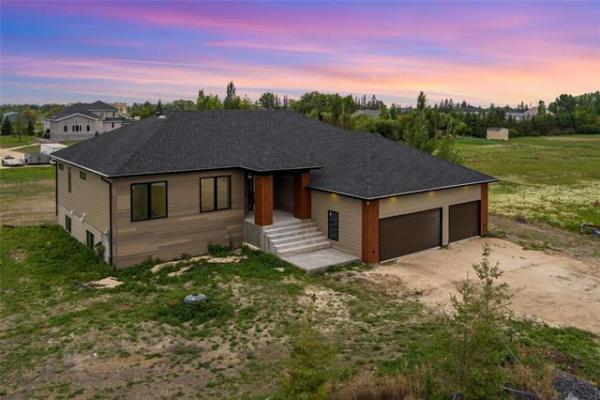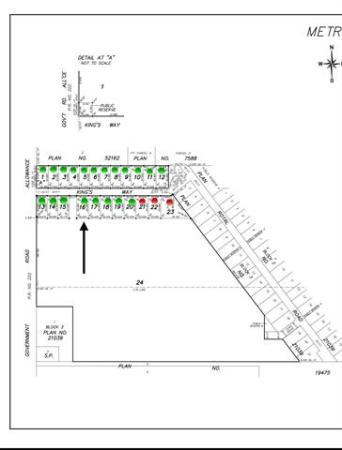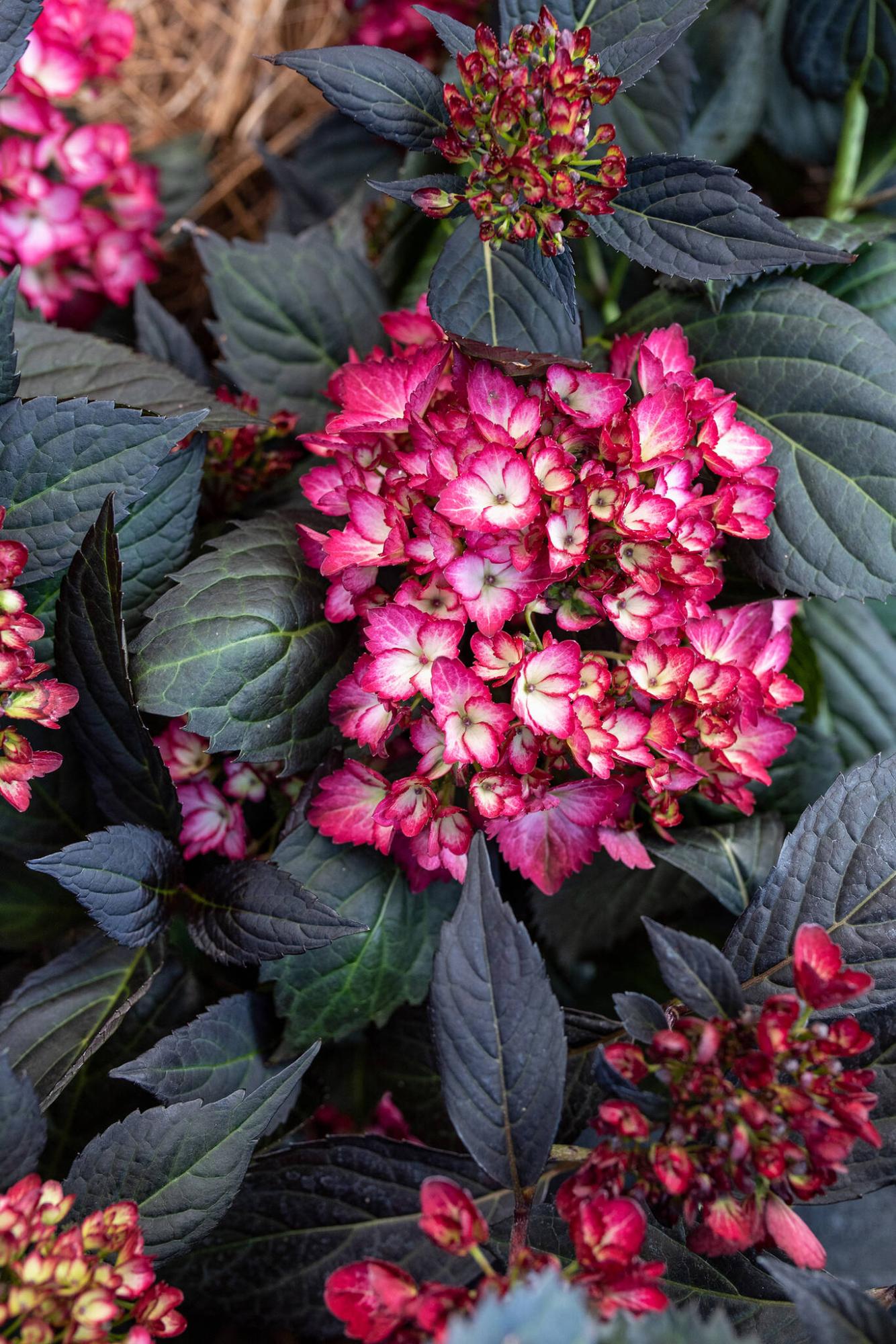
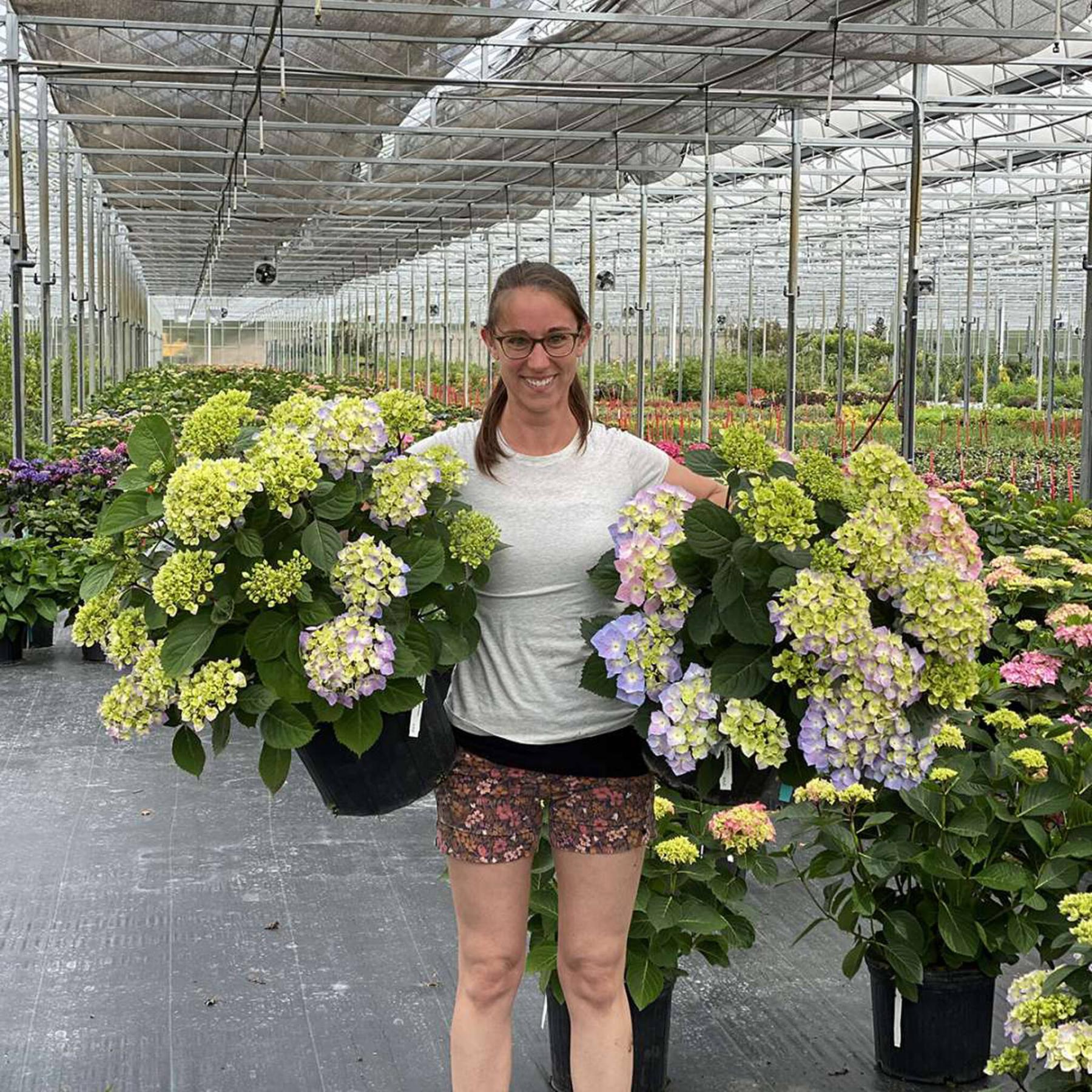
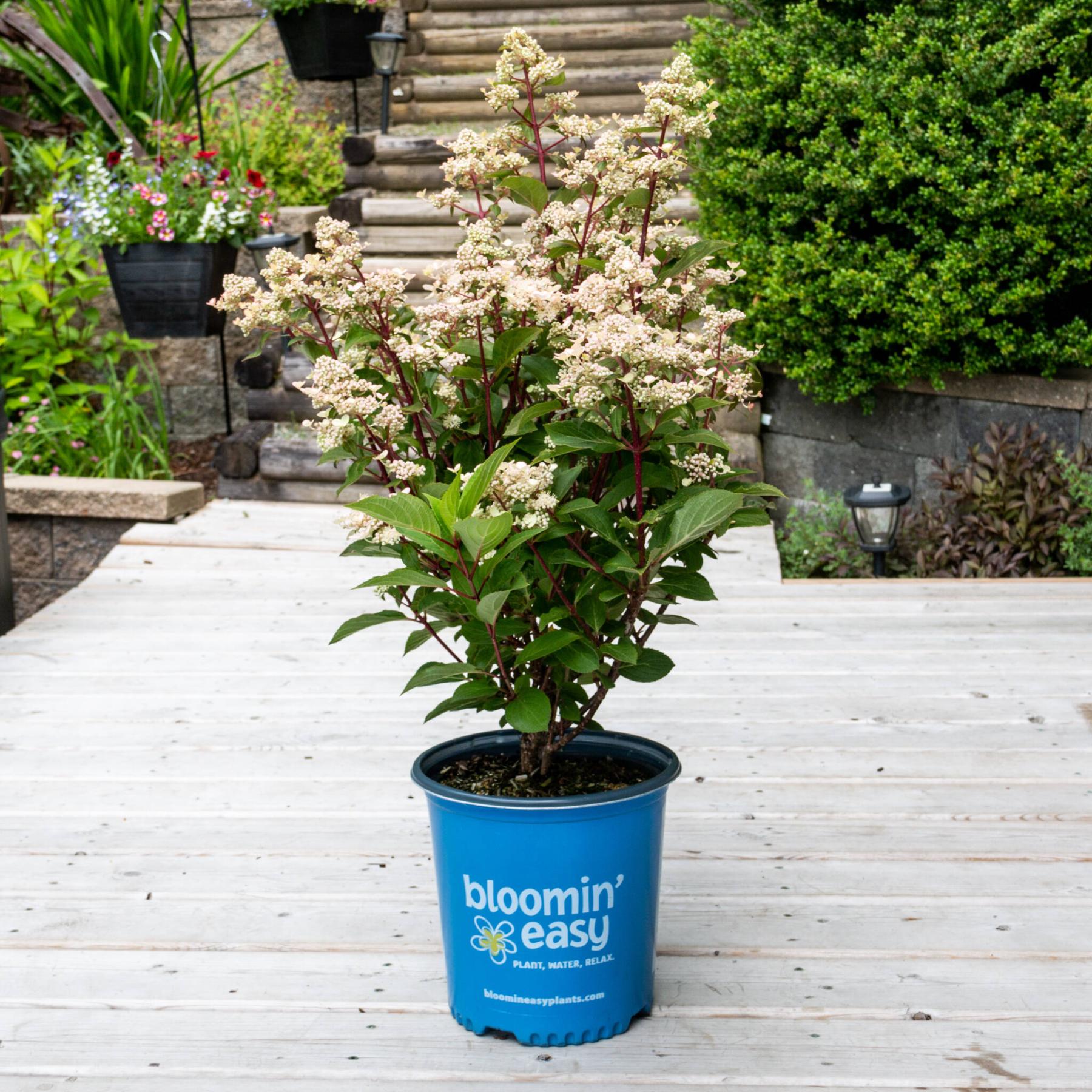
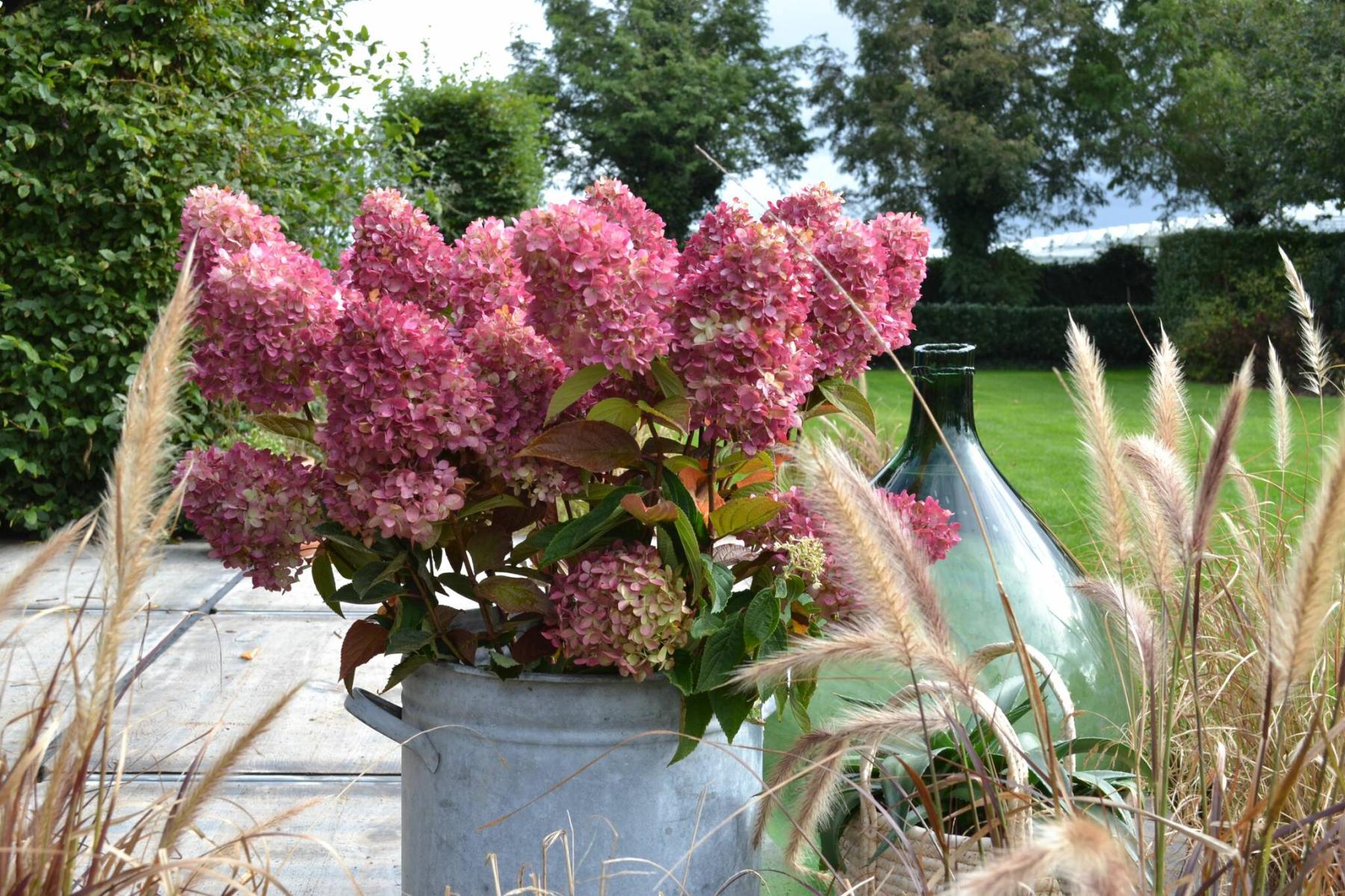
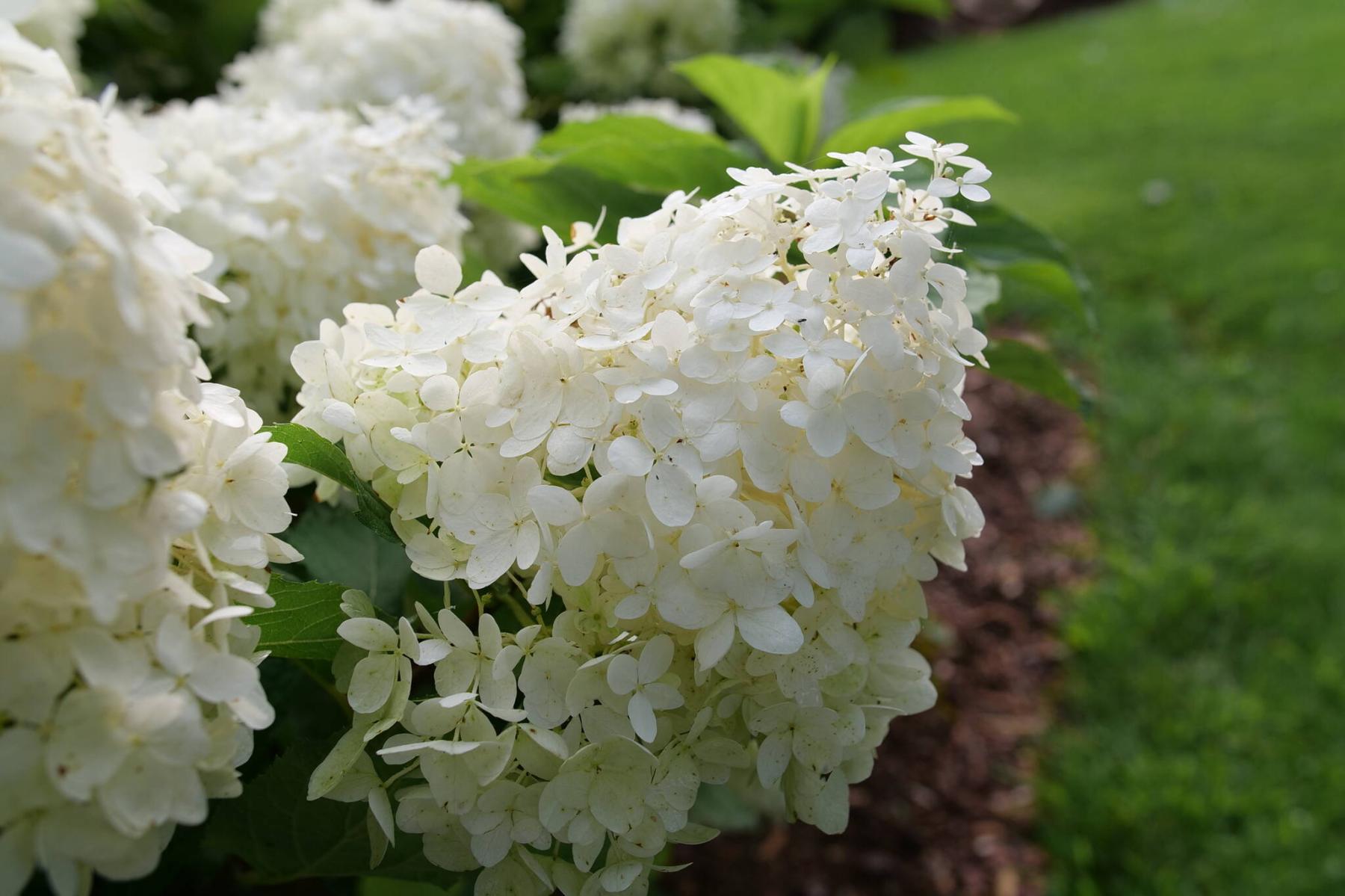
The next big thing in hydrangeas will be in garden centres next spring. First Editions Eclipse Bigleaf Hydrangea from Bailey Nurseries in Minnesota is the first true dark-leaf Hydrangea macrophylla. With dark purple, almost black leaves which stay dark and do not fade to green, there really is no other hydrangea on the market like Eclipse. As if the leaf colour wasn’t enough excitement for hydrangea lovers, the mophead flowers of Eclipse are a stunning cranberry colour. Eclipse is listed as Zone 5 but that is a minor matter. So great is the interest around Eclipse that growers of all stripes have this new hydrangea in their sights. In cold climates such as ours, Eclipse will be sold as a container plant. This extraordinary new hydrangea will provide a one-of-a-kind display in container gardens on patios, balconies, or porches.
It’s not surprising that there will be many new hydrangea varieties to choose from next spring as each year brings more and more. But what is remarkable are the advancements and unique characteristics that so many of the new varieties have to offer. It’s clear that hydrangea breeders aren’t done yet which of course means that neither are hydrangea gardeners.
Let’s Dance Sky View reblooming hydrangea from Proven Winners creates a whole new possibility for cold climate gardeners who want to successfully grow mophead hydrangeas year-round. Let’s Dance Sky View is a cross between Hydrangea macrophylla and Hydrangea serrata (mountain hydrangea). This is significant because plant trials, testing and breeding have shown that Hydrangea serrata is more cold hardy than H. macrophylla. Let’s Dance Sky View is listed as hardy to Zone 4a and has been named Proven Winners Hydrangea of the Year for 2024. The flower colour is pink with a green eye. Adding aluminum sulfate to the soil will change the bloom colour to blue for one season.
If you have not had success with the Endless Summer Hydrangea macrophylla series — failure to bloom in our climate is a reoccurring challenge — check out the newest member of this family, Pop Star. Endless Summer Pop Star from Bailey Nurseries is a lacecap cultivar with strong bud hardiness. Pruning macrophylla hydrangeas at any time of the year is not recommended (more on that later) but if gardeners accidentally prune their Pop Star in spring, it will still be able to bloom that same year. Pop Star grows to only 18 inches (45.72 cm) tall and wide. Plant it in the landscape or in a decorative container. Will it be a star in your garden? It’s worth finding out.
But onto the panicle hydrangea which is the most popular and hardiest type of hydrangea for cold climate landscapes. Perhaps the most surprising new Hydrangea paniculata introduction is Pinky Winky Prime from Proven Winners. Its dramatic size (6 ft to 9 ft or 1.8-2.7 metres) upends the trend towards ever smaller shrubs. The enormous, pointed panicles have the potential to be the largest hydrangea blooms in your garden. The white bloom colour gradually transitions to hot pink starting from the bottom and moving to the tip. Room for just one hydrangea in your garden? Make a statement with Pinky Winky Prime. It was bred in Flanders by Dr. Johan Van Huylenbroeck.
Each year, the folks at Bloomin’ Easy (Van Belle Nursery, Abbotsford, BC) introduce a lineup of improved, low-maintenance plants. Torch hydrangea is a Zone 3 panicle hydrangea that at first glance may not look all that different from other panicle hydrangeas — apart from its strongly upright form and bright red stems — but it offers something else quite unique. Torch hydrangea is one of the earliest flowering hydrangeas on the market. The value of this characteristic cannot be underestimated. Imagine having hardy hydrangea blooms from late spring to fall. The foliage ages to an attractive bronze green.
Dragon Baby Hydrangea paniculata is a hardy Zone 3 dwarf hydrangea from Bloomin’ Easy that is new for 2024. Large, fat hydrangea flowers on short sturdy stems make Dragon Baby a desirable choice for the front of the border or an adorable patio plant. The rosy blooms would be beautiful as a cut flower. Dragon Baby earned a coveted Retailer’s Choice Award at the 2023 Farwest Trade Show in August in Portland, Oregon.
New Puffer Fish panicle hydrangea is another new entry. Puffer Fish blooms earlier than Bobo, a popular but older generation hydrangea, and offers outstanding flower coverage over the entire plant. The mature white flowers on sturdy stems produce a little spray of florets at the tip of each bloom. Puffer Fish hydrangea was bred by Dr. Thomas Ranney, North Carolina State University. This new sun-loving panicle hydrangea is hardy to Zone 3 and has a semi-dwarf habit (3-4 ft or 0.91-1.2m). A unique characteristic that will make Puffer Fish stand out in the fall landscape is that the white flowers do not turn pink as the blooms age.
What can you do now to improve your hydrangea game? Fall is an ideal time to improve your soil structure by adding a layer of compost to your shrub beds. This will provide soil microbes with a nutrient boost and help to promote good soil aeration as well as increase your soil’s water holding capacity. If your compost is not fully finished, it will cure over winter beneath the snow. There is no need to incorporate the compost into the soil, simply spread a thin layer (one-half inch or 1.27 cm) on top of the soil surface. If you don’t have any compost, use fallen leaves as a natural mulch around the base of your shrubs. Mow over the leaves on your lawn to chop them into smaller pieces. Shredded leaves can also be saved for spring mulching. Leaf mulch helps to retain moisture and as the leaves slowly break down, they add nutrients to your soil.
Do not prune hydrangeas in the fall. The ideal time to prune panicle hydrangeas is in early spring by cutting back one-third of their total height using clean, sharp hand pruners. This will promote stronger stems, bigger buds, and more flowers. Panicle hydrangeas bloom on new wood. If you must prune your panicle hydrangeas in the fall, wait until your plant is dormant.
Hydrangea macrophylla (aka bigleaf or mophead hydrangea) and Hydrangea serrata (mountain hydrangea) bloom on old wood. The best advice is to not prune any part of bigleaf or mountain hydrangeas at any time of the year. Pruning in fall removes next year’s flowers. Wait until early June before trimming off any visibly dead branches or old flowers.
Hydrangeas thrive in evenly moist soil. Rather than scattering hydrangeas in different areas of the garden where soil moisture may be inconsistent, group them together and use drip irrigation. This will help to save on watering. These are just some of the ways to build resilience in your hydrangea garden.
colleenizacharias@gmail.com
For advice, ideas and tips to keep your outdoor and indoor plants growing, sign up to receive Winnipeg Gardener, a free monthly digital newsletter I write for the Winnipeg Free Press at https://www.winnipegfreepress.com/newsletter/winnipeg-gardener .

